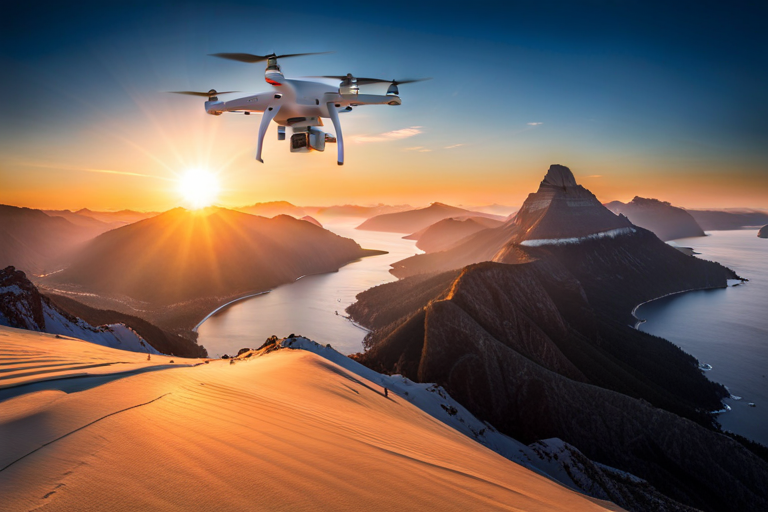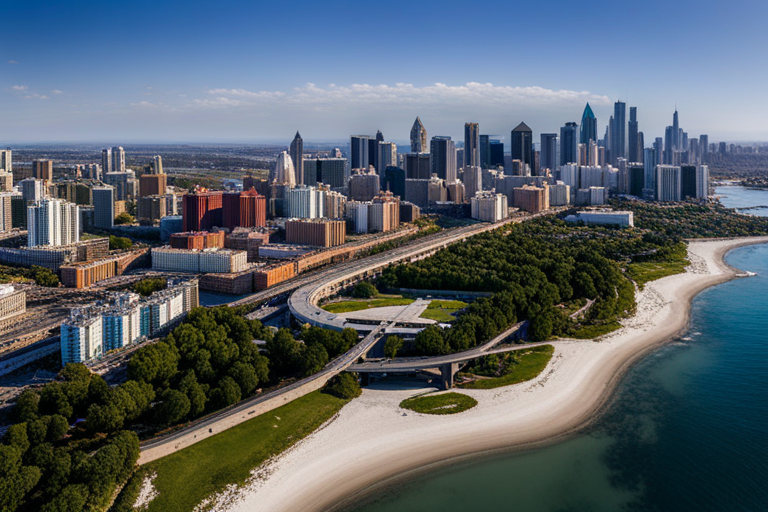Hey there, fellow drone enthusiast! Are you finding that your beloved drone isn't flying as smoothly as it used to? Well, fear not! In this handy how-to guide, I'm going to walk you through the ins and outs of routine drone maintenance. By taking good care of your drone and performing regular maintenance, you can ensure its longevity and keep it soaring through the skies for years to come. So, grab your toolbox and get ready to learn some simple tips and tricks to keep your drone in tip-top condition. Let's dive in, shall we?
Quick Tips
Tip 1: Clean your drone regularly to ensure its longevity. Use a microfiber cloth to wipe off any dust and debris from the body and propellers. This helps prevent them from interfering with the drone's performance.
Tip 2: Inspect your drone's propellers before and after each flight. Look for any signs of wear or damage, such as cracks or bent blades. If you notice any issues, replace them immediately to prevent accidents and maintain the drone's stability.
Tip 3: Keep your drone's battery in good condition by following proper charging and storage practices. Always use the manufacturer's recommended charger and avoid overcharging or discharging the battery excessively. Store the battery in a cool and dry place when not in use to prevent damage.
Tip 4: Regularly update your drone's firmware to ensure it operates smoothly and efficiently. Check the manufacturer's website or drone app for any available updates and follow the instructions to install them correctly. This helps improve the drone's performance and adds new features, enhancing your flying experience.
Clean the propellers, motors, and body after every flight
Taking care of your drone is essential for maintaining its performance and longevity. One important maintenance task is to clean the propellers, motors, and body after every flight. By doing so, you ensure that dirt, dust, and debris won't affect your drone's functionality. To clean your drone effectively, follow these simple step-by-step tips and tricks.
First, make sure to power off your drone and remove the battery before cleaning. This is crucial for your safety and to prevent any accidental damage. Then, take a soft-bristle brush or a compressed air can and gently remove any loose particles from the propellers and motors. Be careful not to apply too much pressure to avoid bending the props or damaging the motors.
Next, use a microfiber cloth slightly dampened with water or a mild cleaning solution to wipe down the body of your drone. This will remove any fingerprints, smudges, or dirt that may have accumulated during your flight. Make sure to be gentle and avoid getting any liquid inside the drone's electronic components.
Finally, inspect your drone to ensure that all the parts are clean and dry. Allow any damp areas to air dry completely before reassembling your drone. By following these simple cleaning steps after each flight, you'll keep your drone in tip-top condition, ready for your next exciting aerial adventure.
Remember, maintaining your drone's cleanliness is just as important as mastering your piloting skills. By dedicating a few minutes to clean the propellers, motors, and body after every flight, you'll not only prolong its lifespan but also enhance the overall performance and enjoyment of your drone flying experience. So, make cleaning your drone a regular part of your post-flight routine and take pride in owning a well-maintained machine.
Give Your Drone The Longest Life | Drone Maintenance Tips
Calibrate the drone's sensors and compass regularly for accurate flights
To ensure accurate flights with your drone, it is crucial to regularly calibrate its sensors and compass. By calibrating these components, you are making sure that your drone accurately detects its position and orientation in the sky. To start the calibration process, find an open area away from any magnetic interference such as metal objects or power lines. Then, power on your drone and controller.
Next, access the settings on your drone and locate the option for sensor and compass calibration. Follow the prompts provided, which may involve rotating the drone in various directions. By doing this, you are allowing the drone's sensors to collect data and determine its orientation. Similarly, the compass calibration helps the drone accurately measure its direction in relation to the earth's magnetic field. This step is essential for ensuring accurate flight control and navigation.
Remember to repeat this calibration process regularly, as over time, the drone's sensors and compass may become slightly misaligned. By calibrating these components, you are improving the accuracy of your drone's flight, ensuring safe and controlled operation. With properly calibrated sensors and compass, you can confidently take your drone on accurate and enjoyable flights while avoiding any unwanted drifting or inaccurate positioning.
Check and update the firmware to protect against software vulnerabilities
Checking and updating the firmware on your devices is crucial to protect against potential software vulnerabilities. To begin, locate the manufacturer's website and navigate to the support or downloads section. Look for any available firmware updates for your specific device model. Download the update file and save it to a location on your computer that you'll easily remember, such as your desktop.
Next, connect your device to your computer using the provided cable or via a wireless connection. Open your device's settings and select the option to update the firmware. Follow the on-screen instructions and select the downloaded update file when prompted. The update process may take some time, so be patient and do not disconnect your device during the update.
Once the firmware update is complete, restart your device to ensure that all changes are applied. It's important to regularly check for firmware updates and install them as they become available. By doing so, you'll be ensuring that your devices have the latest security patches and are protected against potential software vulnerabilities. Stay proactive in maintaining the security of your devices to keep your personal information safe.
Store the drone safely in a cool and dry environment
When you are done using your drone, it is important to store it safely to ensure its longevity. One of the key considerations is to store the drone in a cool and dry environment. A cool and dry environment helps prevent any damage to the delicate electronics inside the drone. Moisture and extreme temperatures can cause corrosion and affect the drone's performance. So, find a storage space that is away from direct sunlight, humidity, and extreme temperature fluctuations.
To store your drone safely, make sure to keep it in a protective case or a box specifically designed for drones. This will provide an extra layer of cushioning and protection. Additionally, it is crucial to remove any accessories or attachments from the drone before storing it. This includes propellers, batteries, and memory cards. Removing these items not only reduces the risk of damage but also prevents any potential accidents.
Furthermore, when storing your drone in a cool and dry environment, it is essential to also consider the overall surroundings. Ensure that the area is clean and free from any dust or debris. Dust particles can accumulate on the drone's sensitive components and cause issues with its performance. Therefore, regularly clean the storage space to minimize any potential risks.
By following these simple steps, you can ensure that your drone remains in optimal condition for future use. Storing it in a cool and dry environment, using a protective case, removing accessories, and keeping the surroundings clean will help extend the lifespan of your drone. Taking care of your drone during storage can save you from costly repairs and allow you to enjoy many more flights in the future.
Conclusion
A routine drone maintenance program is crucial to ensuring the longevity and optimal performance of your expensive electronics. By following a few simple steps, such as cleaning the propellers, motors, and body after every flight, calibrating the drone's sensors and compass regularly, and checking and updating the firmware, you can protect against potential hardware and software issues. These proactive measures not only extend the lifespan of your drone but also enhance its accuracy and functionality during flights. By investing a little time and effort into maintenance, you can enjoy a longer-lasting and more reliable drone, allowing you to capture breathtaking aerial footage and explore new horizons with confidence. So, don't overlook the significance of routine drone maintenance – it's the key to improving your drone experience and ultimately enhancing your life.
FAQ
1. Why is routine maintenance important for drones?
Regular maintenance is crucial for drones as it helps ensure their optimal performance, prevents unexpected failures, extends their lifespan, and maintains safety during flight operations.
2. How often should I perform routine maintenance on my drone?
The frequency of routine maintenance will vary depending on the drone model, usage, and flight conditions. However, it is recommended to perform basic maintenance tasks before and after each flight, and conduct more comprehensive checks every 10-20 flight hours.
3. What are the basic maintenance tasks I should perform before and after each flight?
Before flight, you should inspect the drone for any physical damage, check propellers for cracks or chips, ensure all connections are secure, and verify the battery charge level. After the flight, clean the drone, inspect for wear and tear, and store it in a safe and clean environment.
4. Are there any specific checks I need to perform during comprehensive maintenance?
During comprehensive maintenance, you should inspect and clean the propellers, motors, and any other moving parts. Check the battery for swelling or reduced capacity, inspect and clean the camera and gimbal (if applicable), ensure all firmware is up to date, and ensure the remote control is functioning correctly.
5. How should I clean a drone properly?
When cleaning a drone, it is important to use non-abrasive, lint-free cloths or compressed air. Additionally, use isopropyl alcohol or appropriate cleaning solutions to remove dirt, debris, or fingerprints from the drone's body, lenses, and camera sensor (if applicable). Avoid using excessive force or liquid near electronic components.
6. Do I need to calibrate the drone regularly?
Yes, calibration is an essential part of routine maintenance. You should calibrate the drone's compass, accelerometer, and gyroscope periodically as recommended by the manufacturer, or if you experience erratic flight behavior or poor GPS performance. Always follow manufacturer guidelines to ensure proper calibration.
7. How important is battery maintenance?
Battery maintenance is critical for drone longevity and overall performance. Always follow the recommended charging and storage guidelines provided by the manufacturer. Never fly with damaged or swollen batteries, and avoid overcharging or completely depleting the battery's charge. It is also essential to store batteries in a cool and dry place away from flammable materials.
8. Are there any specialized tools required for routine drone maintenance?
While some manufacturer-specific models may require specialized tools, most routine maintenance tasks can be performed using basic tools like a screwdriver, compressed air canister, microfiber cloths, and cleaning solutions. However, always refer to the manufacturer's instructions for any specific or unique tools needed.
9. Can I perform routine maintenance on my drone myself, or should I seek professional help?
Basic maintenance tasks, such as visual inspections, cleaning, and battery checks, can usually be performed by drone owners themselves. However, for more complex issues, firmware updates, or intricate repairs, it is advisable to seek professional assistance or consult the manufacturer's authorized service centers to avoid any potential damage.
Remember, routine maintenance is crucial for the longevity and reliable performance of your drone. By investing time and effort into proper maintenance, you can enhance your drone's lifespan, prevent unforeseen accidents, and ensure a seamless flying experience.



